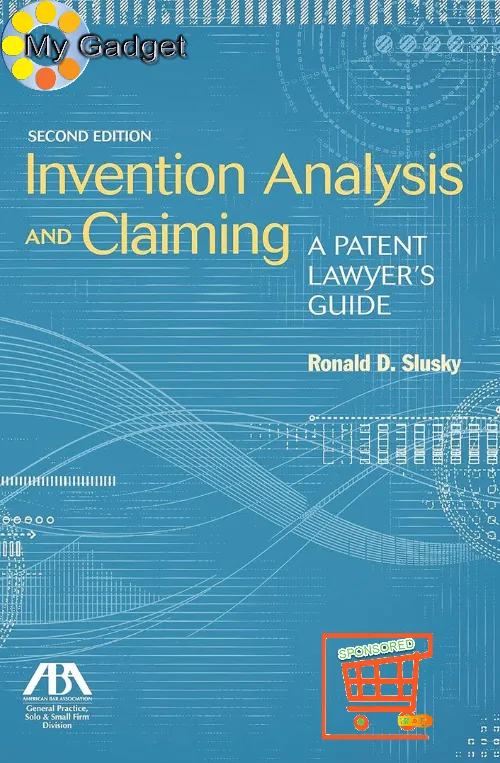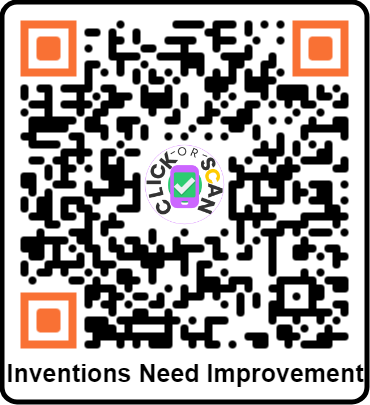Inventions That Need to Be Improved
In today’s rapidly evolving technological landscape, the process of invention analysis and claiming is more critical than ever for innovators and entrepreneurs alike.
As you embark on the journey of bringing your ideas to fruition, understanding the nuances of this process can significantly impact the success and protection of your intellectual property as Inventions That Need to Be Improved.
Invention analysis involves a thorough examination of your creation, assessing its novelty, utility, and potential marketability.
This stage not only helps you refine your concept but also prepares you for the complexities of patent applications and intellectual property rights.
Claiming, on the other hand, is the formal process of defining the scope of your invention in legal terms, allowing you to assert ownership and protect your work from infringement.
By mastering these essential components, you can navigate the intricate landscape of intellectual property with confidence, ensuring that your innovations receive the recognition and protection they deserve.
This article will provide you with the insights and strategies necessary to conduct effective invention analysis and formulate strong claims, empowering you to take proactive steps in safeguarding your creative endeavors.
Table of Contents Inventions That Need to Be Improved
Understand invention analysis for patent applications
When analyzing inventions for patent applications, it is essential to focus on the inventive concept and how it differentiates from existing technologies.
A thorough examination of prior art will provide insight into the novelty and non-obviousness of your invention, crucial elements needed to support patent claims.
This analysis will guide you in drafting claims that accurately capture the essence of your invention while ensuring compliance with legal standards.
As you engage in this process, consider the potential for various claim types, including independent and dependent claims, which can strategically bolster your application.
Effective claim-drafting is a skill that significantly impacts the strength of a patent.
Each claim must be crafted with precision to encompass the inventive aspects while being clear and concise.
By meticulously delineating the boundaries of your invention, you enhance the likelihood of overcoming challenges during examination and potential infringement disputes.
Throughout this journey, remember that the ultimate goal is not just to secure a patent, but to protect and leverage your invention in the marketplace.
Consult a patent lawyer for guidance
Engaging with a patent lawyer can provide invaluable insights throughout your patent application journey.
A qualified professional brings expertise in analyzing inventions and understanding the nuances of patent claims, ensuring that your application accurately reflects your inventive concept.
They can guide you through the complexities of prior art searches and help you navigate potential obstacles, drawing on their experience to enhance the novelty and non-obviousness of your claims.
Moreover, a patent lawyer can assist in refining your claim-drafting approach, ensuring that each claim is crafted to withstand scrutiny while protecting your intellectual property.
Their knowledge of legal standards and requirements enables you to create robust claims that cover all essential facets of your invention.
By leveraging their guidance, you can significantly improve the chances of a successful application, ultimately safeguarding your innovation in a competitive marketplace.
Identify the inventive concept clearly
A clear understanding of the inventive concept is crucial in ensuring that your patent application effectively communicates the uniqueness of your invention.
This concept embodies the essence of what sets your innovation apart from existing solutions, serving as the foundation upon which your patent claims are built.
By distilling your invention into a concise and coherent statement, you can facilitate the crafting of claims that are not only clear but also strategically aligned with your goals of protection and commercialization.
Clarity in identifying the inventive concept allows for a more focused analysis of prior art, enhancing your ability to demonstrate novelty and non-obviousness.
As you work alongside your patent lawyer, maintain an emphasis on articulating the specific features that distinguish your invention.
This focused approach ensures that claim-drafting remains targeted and precise, ultimately reinforcing the strength of your application and increasing the likelihood of its acceptance by patent offices.
Focus on unique aspects of inventions
Highlighting the unique aspects of your invention is essential for crafting robust patent claims that can withstand scrutiny.
By emphasizing the distinctive features that differentiate your product or process from existing technologies, you not only enhance the clarity of your application but also improve its chances of approval.
As you analyze inventions with your patent lawyer, ensure that you thoroughly explore how your innovation addresses particular problems, incorporates novel materials, or employs unique methodologies.
This emphasis on uniqueness will be instrumental in establishing the inventive step required for patentability.
When drafting claims, consider how these unique elements can be articulated to capture the essence of your invention while strategically positioning it against competitive offerings.
This involves an in-depth examination of the inventive concept to ensure that each claim reflects the specific advancements made over prior art.
By focusing on these unique aspects, you can create a strong narrative around your invention that not only satisfies legal criteria but also appeals to potential investors or partners, thereby enhancing your prospects for commercial success.
Conduct thorough patent claims research
Engaging in comprehensive patent claims research is pivotal to ensuring the strength and defensibility of your application.
Through meticulous investigation of existing patents, you will identify relevant prior art that may impact the patentability of your invention.
This process allows you to assess how similar inventions are claimed and to recognize gaps or opportunities for differentiation.
A thorough understanding of these elements will empower you and your patent lawyer to draft claims that not only protect your innovation but also navigate around potential obstacles posed by existing patents.
In your pursuit of drafting effective claims, focus on the nuances that make your invention stand out.
By analyzing the claims of related patents, you can formulate strategies to encapsulate your inventive concept in a manner that is broad enough to offer meaningful protection, yet specific enough to avoid overlap with prior art.
This balanced approach is essential for crafting claims that withstand legal challenges while providing a clear scope of protection for your invention.
Remember that the strength of your patent hinges on the clarity and precision of your claims, making this research phase a crucial component of the patenting process.
Ensure claims cover all variations
When drafting patent claims, it is vital to encompass all potential variations of your invention to safeguard it comprehensively.
Consider all aspects of your inventive concept, including its different features, applications, and configurations.
By meticulously analyzing how similar inventions are claimed in existing patents, you can identify variations that may not be immediately apparent but could be crucial for establishing a robust protective scope.
This not only enhances the likelihood of successfully obtaining a patent but also fortifies your position against potential infringement challenges.
To achieve this, collaborate closely with your patent lawyer to explore a wide array of claim phrasing and structures.
Each variation should be carefully articulated to reflect the full spectrum of your invention’s utility and functionality while avoiding pitfalls associated with prior art.
This strategic approach in claim-drafting will ensure that your application conveys a comprehensive vision of your invention, ultimately positioning it to withstand scrutiny during prosecution and enforcing your rights in the marketplace.
Draft claims with precision and clarity
When you craft your patent claims, precision and clarity are indispensable.
Each term should be chosen carefully, as vague language can lead to misinterpretation and weaken the protection your claims offer.
Aim to describe your inventive concept with an unambiguous and logical structure, ensuring that every element of the claim is directly tied to the innovations your invention provides.
This clarity will not only serve to clarify the scope of your claims to patent examiners but will also be critical in defending against potential infringement by competitors.
Engage regularly with your patent lawyer throughout the drafting process to ensure that your claims are not only legally sound but also technically robust.
They can provide insights into the nuances of claim-drafting and how to express complex technical features in a straightforward manner.
By working together, you can refine the language of your claims until they clearly convey the full extent of your invention’s capabilities, ultimately strengthening your patent application and your position in the marketplace.
Prioritize claims that are enforceable
Focusing on enforceable claims is essential for securing the longevity of your intellectual property rights.
As you analyze your inventions, it’s vital to think critically about the practical application of your claims and their ability to withstand legal scrutiny.
Consider how each claim leverages the inventive concept you’ve developed, ensuring that they meet the standards of novelty, non-obviousness, and usefulness.
This strategic approach enhances the likelihood of successful enforcement in case of infringement and helps dissuade potential challenges from competitors.
Additionally, you should evaluate the jurisdictional implications of your claims, as enforceability can vary significantly across different regions.
Collaborating with your patent lawyer allows you to align your patent strategy with enforceable claims that reflect both your business goals and the competitive landscape.
By prioritizing claims with a solid foundation in patent law, you pave the way for a stronger, more defensible patent portfolio that effectively protects your innovations and supports your market position.
Review existing patents for inspiration
Exploring previously granted patents can provide invaluable insights that inform your claim-drafting process.
By examining existing patents, you can identify successful approaches and common pitfalls that others have encountered in their inventive journeys.
This exercise not only helps you refine your own inventive concept, but also enables you to differentiate your claims, ensuring they are unique and strategically positioned in the marketplace.
Additionally, understanding the language and structure of effective patent claims will enhance your ability to communicate the nuances of your invention.
Analyzing how different patents articulate their inventive features can spark new ideas and lead to innovative ways of framing your claims.
This practice fosters creativity while ensuring your application stands out, ultimately increasing the chances of successful patent approval and protection for your intellectual property.
Strengthen your application with detailed claims
Detailed claims are essential for illustrating the specific aspects of your invention that set it apart from prior art.
By meticulously defining each feature and the inventive concept at play, you create a robust framework that patent examiners can easily understand.
This clarity not only strengthens your application but also helps preempt potential rejections based on ambiguity or lack of specificity.
When drafting your claims, focus on articulating the functional and structural elements of your invention in a way that highlights its novel attributes, ensuring they are both comprehensive and precise.
Moreover, leveraging the insights gained from analyzing inventions in your field allows you to craft claims that reflect a deeper understanding of the technological landscape.
By positioning your claims strategically in relation to existing patents, you can enhance their scope and enforceability.
This nuanced approach to claim-drafting will significantly bolster your application, making it more compelling and better aligned with your overall patent strategy.
Emphasizing detailed, well-structured claims is not just about compliance—it’s about crafting a narrative that effectively communicates the value of your invention to stakeholders and patent authorities alike.
In conclusion, as you navigate the intricate process of invention analysis and claiming, it is essential to remain diligent and methodical in your approach.
By thoroughly evaluating the novelty and utility of your invention, you can bolster your claims and enhance your chances of securing intellectual property protection.
Remember, a well-crafted claim not only defines the scope of your invention but also serves as a critical tool in defending your rights against potential infringement.
Embrace this process as an opportunity to refine your ideas and solidify your position within the competitive landscape, ensuring your innovation receives the recognition and protection it deserves.


